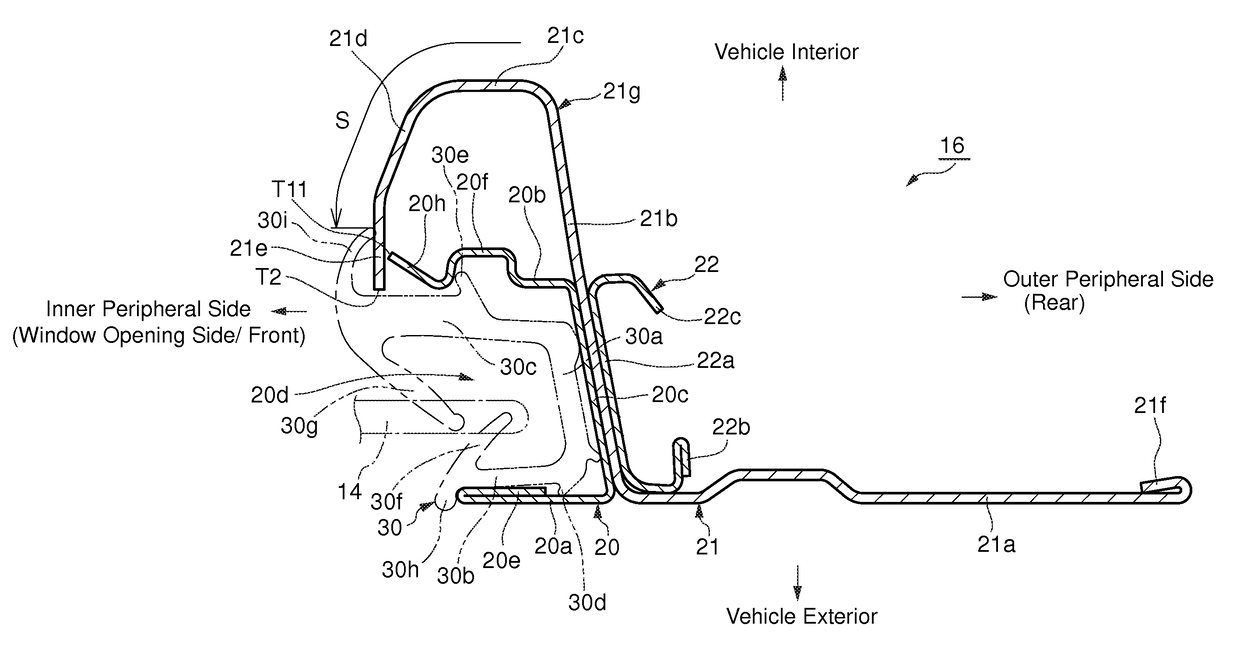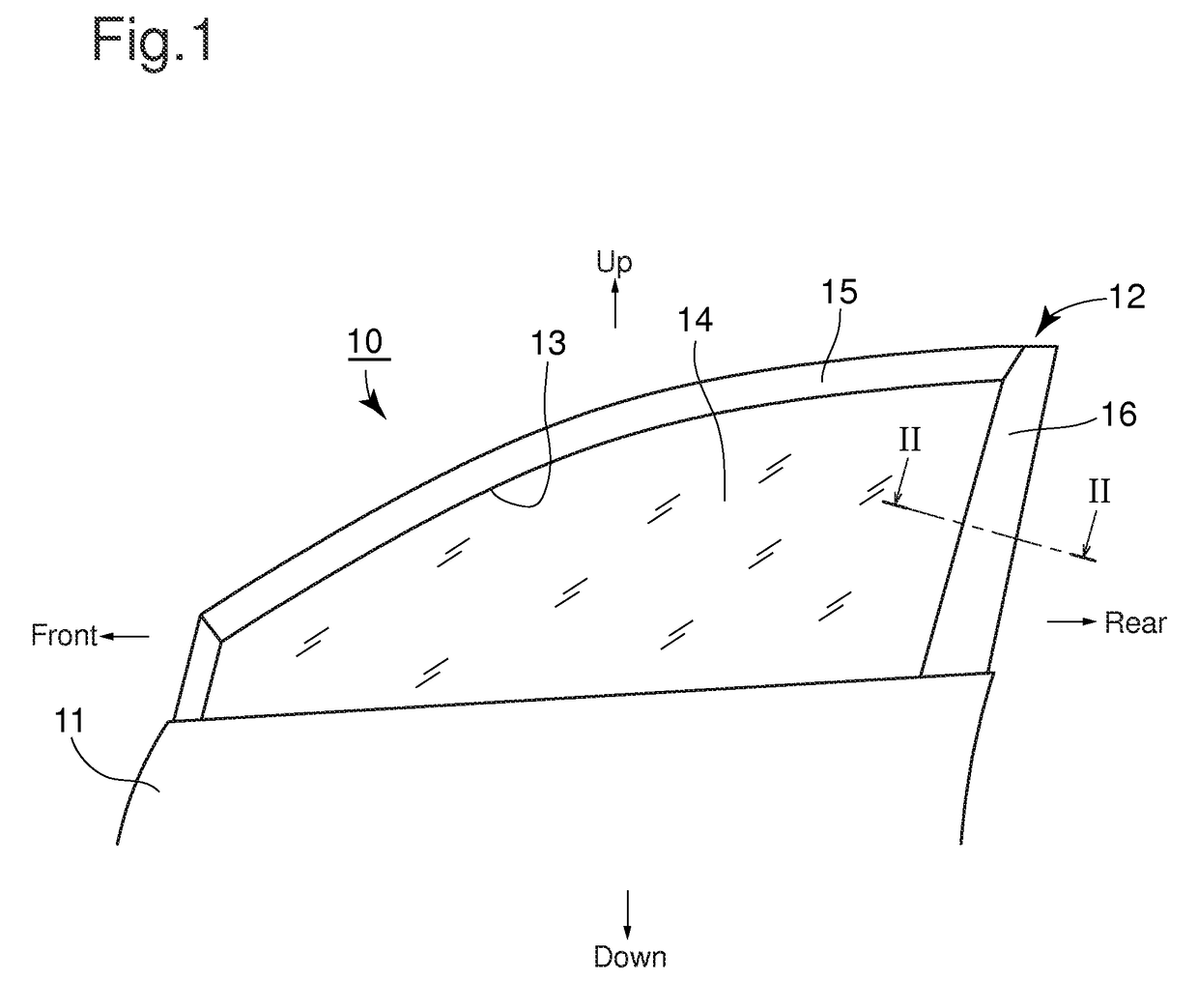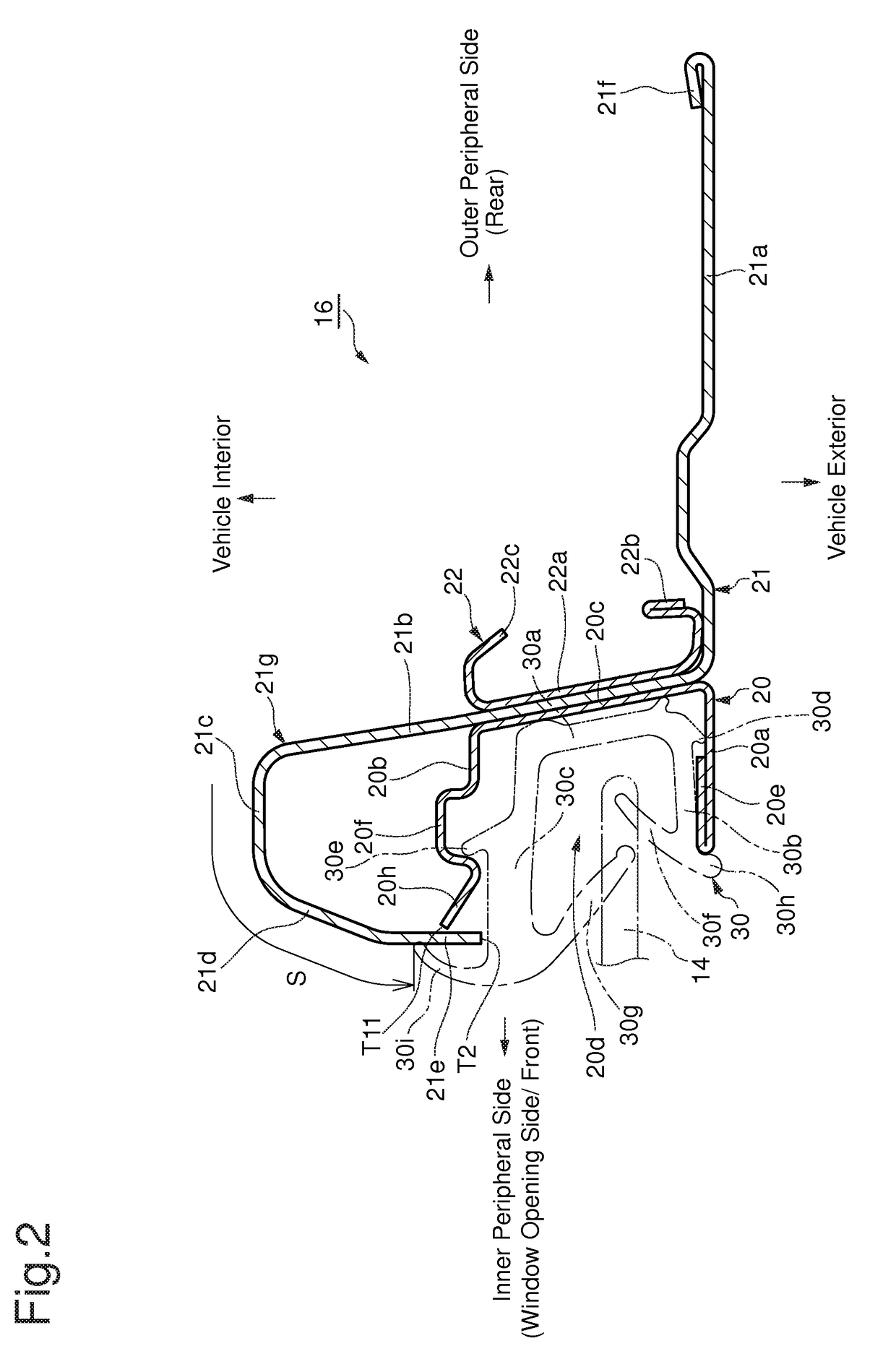Vehicle door sash
a technology for doors and sashes, which is applied in the direction of doors, vehicle components, transportation and packaging, etc., can solve the problems of low degree of design flexibility of the joining portion, deterioration of the appearance of the door sash, and deterioration of the appearance, so as to achieve the effect of superior degree of design flexibility
- Summary
- Abstract
- Description
- Claims
- Application Information
AI Technical Summary
Benefits of technology
Problems solved by technology
Method used
Image
Examples
first embodiment
[0036]FIG. 2 shows the cross sectional structure of the side sash 16 according to the present invention. The side sash 16 is formed by combining an outer member 20, an inner member 21 and an auxiliary member 22. The outer member 20 is provided with a design portion (vehicle exterior side wall portion) 20a, a vehicle interior side wall portion 20b and a base wall 20c. The design portion 20a faces toward the vehicle exterior, the vehicle interior side wall portion 20b faces the design portion 20a and is positioned on the vehicle interior side, and the base wall 20c connects the outer peripheral side ends of the design portion 20a and the vehicle interior side wall portion 20b. The region of the side sash 16 which is surrounded by the design portion 20a, the vehicle interior side wall portion 20b and the base wall 20c is formed as a glass run channel 20d having a bottomed-groove sectional shape which is open to the inner peripheral side. The inner-peripheral-side end of the design port...
fourth embodiment
[0049]In the fourth embodiment shown in FIG. 7, bent end portions 21i which are shaped to increase the amount of projection thereof toward the inner peripheral side in a direction toward the vehicle exterior side are formed at the inner end portion of the vehicle exterior side flange 21e. Namely, the bent end portions 21i are shaped to bend in a direction away from the bent end portions 20h of the outer member 20. Each bent end portion 21i and the associated bent end portion 20h are joined by welding, thereby forming a weld bead (welding mark) W4 therebetween.
fifth embodiment
[0050]In the fifth embodiment shown in FIG. 8, a plurality of bent end portions 21j which are shaped to increase the amount of projection thereof toward the outer peripheral side in a direction toward the vehicle exterior side are formed at the inner end portion of the vehicle exterior side flange 21e. Namely, the bent end portions 21j are shaped to bend in a direction to approach the bent end portions 20h of the outer member 20. Each bent end portion 21j and the associated bent end portion 20h are joined by welding, thereby framing a weld bead (welding mark) W5 therebetween.
[0051]Thermal strain can be reduced by forming each welding part of the vehicle exterior side flange 21e which faces the associated bent end portion 20h into a bent end shape such as the bent end portion 21i or 21j. The bend angle of each bent end portion 21i, which is shaped to bend toward the inner peripheral side, is limited to a small degree of angle so that each bent end portion 21i does not interfere with ...
PUM
 Login to View More
Login to View More Abstract
Description
Claims
Application Information
 Login to View More
Login to View More - R&D
- Intellectual Property
- Life Sciences
- Materials
- Tech Scout
- Unparalleled Data Quality
- Higher Quality Content
- 60% Fewer Hallucinations
Browse by: Latest US Patents, China's latest patents, Technical Efficacy Thesaurus, Application Domain, Technology Topic, Popular Technical Reports.
© 2025 PatSnap. All rights reserved.Legal|Privacy policy|Modern Slavery Act Transparency Statement|Sitemap|About US| Contact US: help@patsnap.com



